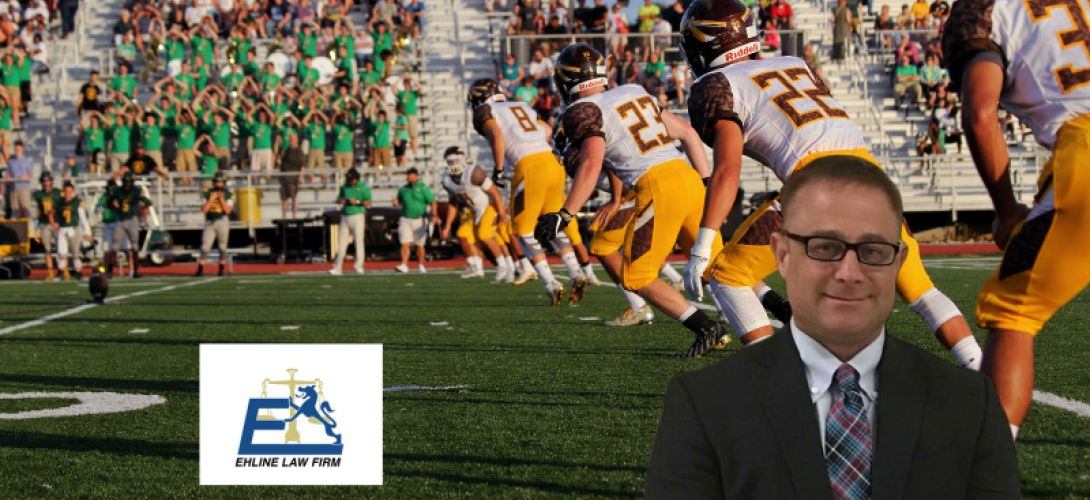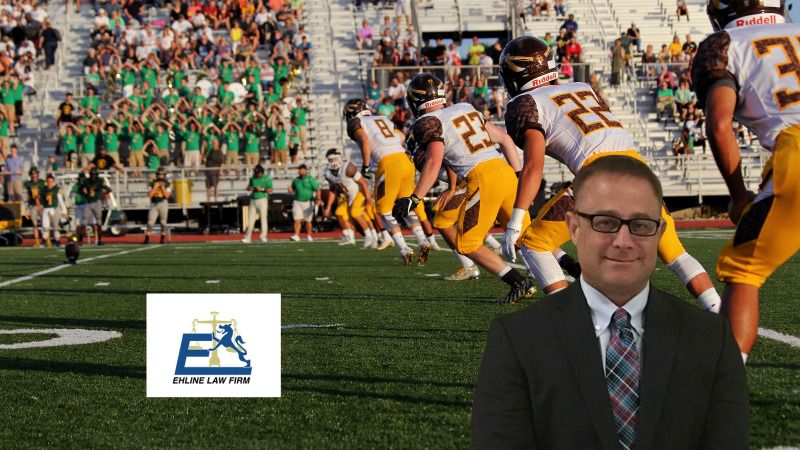
12 Steps for Schools and Athletic Personnel to Reduce Sports Injury Liability

12 Steps for Schools and Athletic Personnel to Reduce Sports Injury Liability
Despite legislation to control and safeguard children and adults from athletic injuries, preventing injuries requires intense monitoring and an effective risk management strategy. Each year, thousands of student and adult pro athletes suffer a wide variety of injuries to diagnose, including strains, impact injuries to the head (brain injury), and other harm related to their training environment. Reducing liability in school sports and athletics necessitates a proactive safety and risk management approach. The role of an athletic director or subordinate athletic trainer (AT) is crucial in ensuring positive athletic experiences and should prioritize the protection and preservation of athletics. The job description should encompass effective management practices and the prevention of negligent behavior. The challenges for an athletic trainer arise from increasing regulatory pressures and the complexities of our modern society.
Coaches must adhere to compliance standards and demonstrate their competence in delivering an optimal athletic experience. In certain situations, potential liability can be mitigated by applying immunity laws or the protection offered to such an athletic trainer by good Samaritan laws. This article covers sports medicine for a pro athlete or high school football player athletic program. It intends to focus on reducing athletic injuries caused during athletic participation if you are a school nurse or among many athletics administrators dealing with liability issues caused by sports participation neglect or poor supervision.
The goal is to improve the athlete’s health, explicitly preventing a minor or permanent disability. Many schools have contacted us over various issues, including sexual harassment issues with students, especially girls. So this article attempts to critically examine these concerns to help prevent emotional and physical disabilities. Hopefully, this article by personal injury lawyer Michael Ehline will help with sport-specific professional development and answer essential questions for the administrator and spectator alike. Let’s get into it!
What Does The National Athletic Trainers Association Think?
While each school and district may have specific guidelines and policies in place, here are 12 steps athletic trainers and organizations should consider that an injury lawyer thinks can help minimize liability:
1. Develop Comprehensive Policies and Procedures
Establish clear and detailed policies and procedures for all aspects of sports and athletics, including safety protocols, equipment maintenance, emergency response plans, and student supervision to ensure pro and youth sports safety. Emergency Contacts, Procedures, and Protocols for athletic directors or athletic trainers to consider when dealing with a pro or student-athlete. Follow the law and train your coach and others expected to address the matter before it blows up in your face.
2. Provide Proper Training
Ensure that all coaches, athletic directors, and personnel receive proper training in safety protocols, first aid, CPR, and any specific requirements for the sports or activities the athletic trainer is charged to oversee. For example, Title IX provides that student-athletes can’t be discriminated against based on sex. Your coaches and players need to put this into practice to provide an inclusive environment during practice and actual sporting competitions. You are also responsible for preventing hazing or other conduct considered to be harassment.
3. Conduct Thorough Background Checks
Implement a robust screening process for all personnel involved in sports and athletics, including coaches, athletic trainers, and volunteers, to ensure their suitability and minimize potential risks. If injured, even if the athlete recovers, now there is a risk of second impact syndrome and future lawsuits. A coach with a rape conviction is also a risk to a small child, so do your research and know who your administration is hiring.
4. Maintain Proper Equipment
Regularly inspect and maintain sports equipment and facilities to ensure they are safe, functional, and meet industry standards. Replace any damaged or outdated equipment promptly. Even if your athletic trainer thinks factory-direct items are safe, you must check for flaws, defects, and damage affecting its integrity to protect athletes.
5. Enforce Safety Guidelines
Emphasize the importance of your athletic trainer adhering to safety guidelines and rules during practices, games, and other athletic events. Enforce and document disciplinary measures for violations to promote a safety culture. Any successful athletic trainer program will include an established pursuit of training and guidance from physicians who already care for wounded high school and university players and athletes. This is probably the best way to avoid court and injured victims nationwide in the many schools and sports stadiums.
6. Provide Appropriate Supervision Over Athletic Trainers’
Ensure adequate supervision by qualified personnel during all sports and athletic activities, including practices, games, and transportation.
7. Conduct Regular Athletic Trainer Safety Audits
Periodically evaluate the safety protocols, equipment, facilities, and procedures to identify potential hazards or improvement areas. Address any identified issues promptly.
8. Maintain Proper Records About Student-Athletes and Coaches
Keep detailed records of safety training, certifications, background checks, incident reports, and other relevant documentation. This helps demonstrate compliance and can be invaluable in the event of a liability claim.
Rules vary regularly. Any time you move to any new district or state, you are likely dealing with a shift in requirements. How can I avoid running out of afoul if I have an outdated system? Finalforms is an excellent example.
9. Communicate with Parents/Guardians of Each Student Athlete
Maintain open and transparent communication with student-athlete parents or guardians, providing them with necessary information about safety measures, risks, and expectations.
10. Obtain Appropriate Insurance Coverage
Ensure the school or district has adequate insurance coverage, including liability protection for sports and athletics-related incidents.
Buy a professional liability policy and protect yourself against unpredictability and the unforeseen. It seems as though there are risks everywhere. And should it occur, your safety is essential.
11. Encourage Informed Consent
Obtain signed consent forms from parents or guardians that acknowledge the risks associated with participation in sports and athletics, helping to establish awareness and assumption of risks.
12. Continually Educate and Update
Stay informed about best practices, industry standards, and any legal updates related to sports and athletics. Provide ongoing education and training for personnel to update them on safety practices and risk management strategies.
It is essential to consult with legal counsel and insurance professionals to ensure compliance with applicable laws and regulations specific to your jurisdiction and to address any unique considerations or requirements of your school or district.
Athletic Trainers: Why Should Every High School Have One?
Athletic trainers play a vital role in ensuring the health and safety of student-athletes in high school sports programs.
Here are some reasons why every high school should have an athletic trainer:
- Injury prevention: Athletic trainers are trained to assess and identify potential injury risks. They can develop and implement injury prevention programs, such as warm-up routines and proper conditioning exercises, to reduce the likelihood of injuries during sports activities.
- Immediate response to injuries: In the event of an injury, athletic trainers are on the sidelines to provide immediate care. They can assess the severity of an injury, administer first aid, and make informed decisions about whether further medical attention is required.
- Injury management and rehabilitation: Athletic trainers are skilled in evaluating and managing various sports injuries. They can provide initial treatment, develop rehabilitation programs, and work with athletes to facilitate their safe and timely return to sports activities.
- Concussion management: Concussions are a significant concern in sports. Athletic trainers are trained to recognize the signs and symptoms of concussions. They can implement proper protocols for evaluation, management, and return-to-play decisions per current concussion guidelines.
- Health and wellness education: Athletic trainers educate student-athletes on topics such as nutrition, hydration, injury prevention, and proper training techniques. By promoting healthy habits and injury prevention strategies, they contribute to the overall well-being of student-athletes.
- Collaborative approach: Athletic trainers work closely with coaches, parents, and healthcare professionals to ensure comprehensive care for student-athletes. They can communicate with medical providers, coordinate appointments, and assist in the implementation of individualized care plans.
- Emergency preparedness: Athletic trainers are trained in emergency response and can effectively manage potentially life-threatening situations that may arise during sports activities. Their presence enhances the overall safety and preparedness of the sports program.
- Compliance with regulations: Many states and athletic associations require the presence of athletic trainers in high school sports programs to ensure compliance with safety standards and regulations. Having an athletic trainer on staff helps schools meet these requirements.
Overall, an athletic trainer in high schools can significantly contribute to student-athlete’s health, safety, and well-being. Their expertise in injury prevention, management, and education provides valuable support to sports programs and enhances the overall sports experience for student-athletes.
Defenses Against Negligence and Poor Risk Management
When facing a negligence claim related to sports injuries, several defenses and risk management strategies can be utilized.
These defenses may include:
- Assumption of risk: This defense asserts that the injured party willingly participated in the sport or activity, understanding and accepting the inherent risks involved. To establish this defense, it must be shown that the plaintiff had knowledge of the risks and voluntarily chose to engage in the activity despite those risks.
- Waivers and releases: Properly drafted and executed waivers or release forms can help protect against liability by obtaining the participant’s agreement to assume the risks and waive their right to sue for injuries arising from ordinary negligence. However, it is important to note that waivers may not protect against gross negligence or intentional misconduct claims.
- Comparative negligence: In some jurisdictions, the defense of comparative negligence may apply. This means that if the injured party is found to have contributed to their own injuries through their own negligence or failure to exercise reasonable care, their recovery of damages may be reduced in proportion to their level of fault.
- Statute of limitations: Each jurisdiction has a specific time limit within which a lawsuit must be filed. If the injured party fails to initiate legal action within this timeframe, their claim against athletic trainers and government agencies may be barred by the applicable statute of limitations.
- Proper supervision and coaching: Employing qualified and experienced coaches and providing proper supervision during sports activities can demonstrate that reasonable care was exercised in preventing injuries. Adequate training, certification, and adherence to industry standards can bolster this defense.
- Emergency response and medical care: Ensuring that appropriate emergency response protocols are in place, including having qualified medical personnel available and providing prompt and proper medical care following an injury, can support the defense that reasonable and timely actions were taken to address the situation.
- Compliance with regulations and safety standards: Demonstrating compliance with applicable laws, regulations, and safety standards specific to sports and athletics can help establish a strong defense against negligence claims.
It is important to consult with legal counsel familiar with sports injury cases to assess the specific circumstances and jurisdictional laws applicable to your situation. They can provide tailored guidance on the defenses and risk management strategies most relevant to your case. In particular, head injuries are a big deal, and they can end people’s careers before they start.
Principles of Liability for Athletic Trainers: Managing Sport-Related Concussion
When it comes to managing sport-related concussions, athletic trainers must adhere to key principles of liability. These principles are aimed at ensuring the safety and well-being of athletes while minimizing the risk of liability for the trainers. Keep in mind boys tend to be more aggressive and are far stronger than girls, so it is important to understand placing a male with females in contact sports teams could end in tragedy for a girl.
Here are some important considerations:
- Stay Informed: Athletic trainers should stay up-to-date with the latest research, guidelines, and best practices related to concussion management. This includes being aware of changes in concussion protocols and advancements in diagnostic tools to diagnose brain injuries. Your responsibility is not delegable, so remember that.
- Education and Training: As noted above, trainers should receive proper education and training in concussion recognition, evaluation, and management. They should be knowledgeable about the signs and symptoms of concussion and the appropriate steps to take in case of a suspected concussion.
- Implement Safety Policies: Athletic trainers should work closely with school or organization administrators to establish and enforce safety policies and procedures related to concussions. This may include guidelines for return-to-play protocols, athlete education, and equipment safety.
- Pre-participation Evaluations: Consider utilizing thorough pre-participation evaluations can help identify any pre-existing conditions or risk factors that may increase the likelihood of concussions. Trainers should ensure that athletes are medically cleared before participating in sports activities.
- Proper Documentation: Accurate and detailed documentation is crucial in liability management. Trainers should maintain records of pre-participation evaluations, injury assessments, return-to-play protocols, and any communication with athletes, parents, or healthcare professionals.
- Communication: Effective communication with athletes, parents, coaches, and healthcare professionals is essential. Trainers should promptly report any suspected concussions, provide clear instructions for follow-up care, and keep all relevant parties informed throughout the recovery process.
- Emergency Action Plan: Athletic trainers should develop and regularly review an emergency action plan that outlines the appropriate response in case of a suspected concussion or other medical emergencies. This plan should include contact information for emergency medical services and procedures for accessing necessary medical care.
- Continuous Evaluation and Improvement: Trainers should continually assess and improve their concussion management practices based on feedback, research findings, and advancements in the field. Staying proactive and adaptable is key to providing the best care for athletes.
Conclusion
The benefits of a proper athletic training program far outweigh any potential pitfalls in the sporting community. By following these principles of liability, athletic trainers might be able to manage sport-related concussions and prevent illness among players effectively. The goal is to minimize the risk of litigation and courts and to simultaneously ensure the well-being of the athletes and team members under the care or guidance of their department. If you are a victim or an athletic trainer with more questions, reach out to our sports injury attorneys for a free legal consultation at (213) 596-9642.
Citations
- Guskiewicz KM, Weaver NL, Padua DA, Garrett WE., Jr. Epidemiology of concussion in collegiate and high school football players. Am J Sports Med. 2000; 28:643–650. [PubMed]
- Kampmeier v. Nyquist. 553 F.2d 296 (2d Circ. 1977)
Categories

Michael Ehline
Michael Ehline is an inactive U.S. Marine and world famous legal historian. Michael helped draft the Cruise Ship Safety Act and has won some of the largest motorcycle accident settlements in U.S. History. Together with his legal team, Michael and the Ehline Law Firm collect damages on behalf of clients. We pride ourselves in being available to answer your most pressing and difficult questions 24/7. We are proud sponsors of the Paul Ehline Memorial Motorcycle Ride, and a Service Disabled Veteran Operated Business. (SDVOB.) We are ready to fight.
Go here for More Verdicts and Settlements
